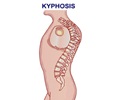European pharmacologists say that a potential new drug that 'opens the taps' for the release of useful hormones may trigger the growth of new bones, and eventually bring relief to
A potential new drug that 'opens the taps' for the release of useful hormones may trigger the growth of new bones, according to European pharmacologists. This could eventually bring relief to osteoporosis sufferers.
The researchers made a presentation on the exciting potential of the so-called negative allosteric modulators at a special symposium at The Federation of European Pharmacological Societies (EPHAR) 2008 Congress at The University of Manchester, UK, on Wednesday.They said that their work focussed on the stimulation of parathyroids-tiny glands located above the thyroids that control the release of the parathyroid (PTH) hormone into the bloodstream.
When the concentration of calcium is too low in the blood's plasma, PTH is released and acts on various tissues to increase the level of calcium in the blood. This calcium then activates the calcium sensing receptor on the parathyroid cell, which then reduces PTH release.
The first POSITIVE allosteric modulator was recently introduced into clinical practice for treating patients displaying high levels of PTH in the plasma - such as those with chronic kidney disease on dialysis and those displaying hypercalcaemia with parathyroid cancer. It mimics the effect of calcium on the receptor and so reduces PTH release.
The researchers said that negative allosteric modulators had been found to block the effect of calcium on the parathyroid cell in pre-clinical trials, and thereby increase the release of PTH in the serum.
"Daily administration of a negative allosteric modulator of the calcium sensing receptor should promote a sustained increase of PTH in such a way that it will stimulate new bone formation," said symposium organiser Martial Ruat, a neuropharmacologist at the government funded Centre National de la Recherche Scientifique in France.
Advertisement
Dr. Raut also said that it might take at least another eight to 10 years before negative allosteric modulators were passed for use in patients.
Advertisement
"The calcium sensing receptor is also found in the kidney, the intestine, in some vascular and bone cells and also in the brain. We still need to identify the roles of this receptor in these tissues before being able to specify novel applications of these drugs," he added.
European pharmacologists are studying negative and positive allosteric modulators to identify the functions of calcium sensing receptors in the control of blood pressure also.
Source-ANI
RAS/L













